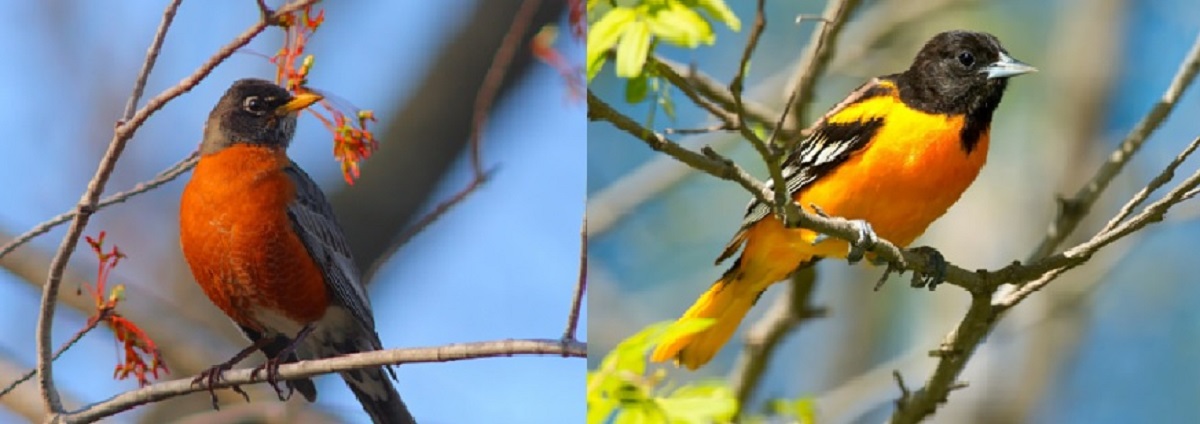Robins and oriole are both harbingers of spring with their upbeat songs and similar orange coloration, However, they belong to different families of birds and vary in size, habitat, vocalization, and overall coloration.
Robins and Orioles boast orange plumage, live in similar habitats in North America, and even have cheery and upbeat songs. Although they share a lot in common, these birds belong to different families of birds and have noticeable differences in color, habitats, and diets.
Robin vs. Oriole: How to Tell the Difference
Even avid birdwatchers sometimes mix up these birds. If you want to tell the difference between these two songbirds in a hurry – look at the distribution of orange plumage.
Robins are often called “Robin Red Breast,” but the underside of a robin is more of a rusty orange than red. Orioles boast bright orange feathers that are easy to spot, even when perched high on the tree tops.
As robins dwell and hunt for food nearer to the round, announcing their presence with loud-colored feathers would do them a disservice. Their colors are more muted.
In addition to coloring, these two songbirds are from different species of birds and have fundamental differences in size, habitat, calls, and diet.
Watch our video and learn 7 things about orioles you may not have known about!
Are Orioles And Robins In The Same Family?
Despite their similarities, these charismatic songbirds are not part of the same family of birds. The American robin is a thrush family member, similar to an Eastern bluebird, Townsend’s Solitaire, or Veery.
Thrushes have a plump and rounded shape, similar to the American robin. Orioles, on the other hand, are members of the blackbird family. Birds in the blackbird family are smaller and more slender than Thrushes and include birds such as bobolinks, meadowlarks, and cowbirds.
Versions of both robins and orioles in North America are named for similar-looking birds in Europe, but neither species is related to the birds they were named for.
American robins are thrushes (Turdus migratorius), while their foreign counterparts are from the Old World flycatcher family. There are seven species of the American robin.
New World orioles are a group of birds in the genus Icterus of the blackbird family. Unrelated to Old World orioles of the family Oriolidae, they are strikingly similar in size, diet, behavior, and strongly contrasting plumage. As a result, the two have been given the same vernacular name. There are 10 species of oriole in the US and over 33 in the Western hemisphere.
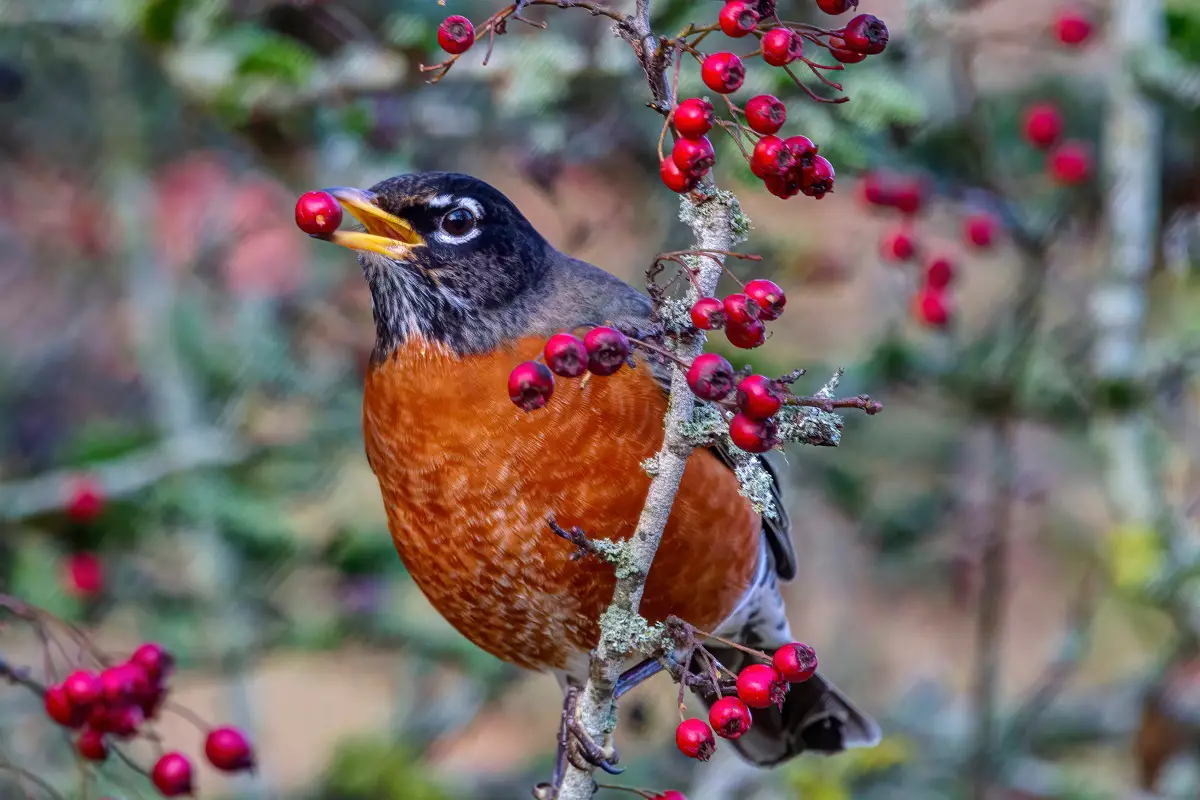
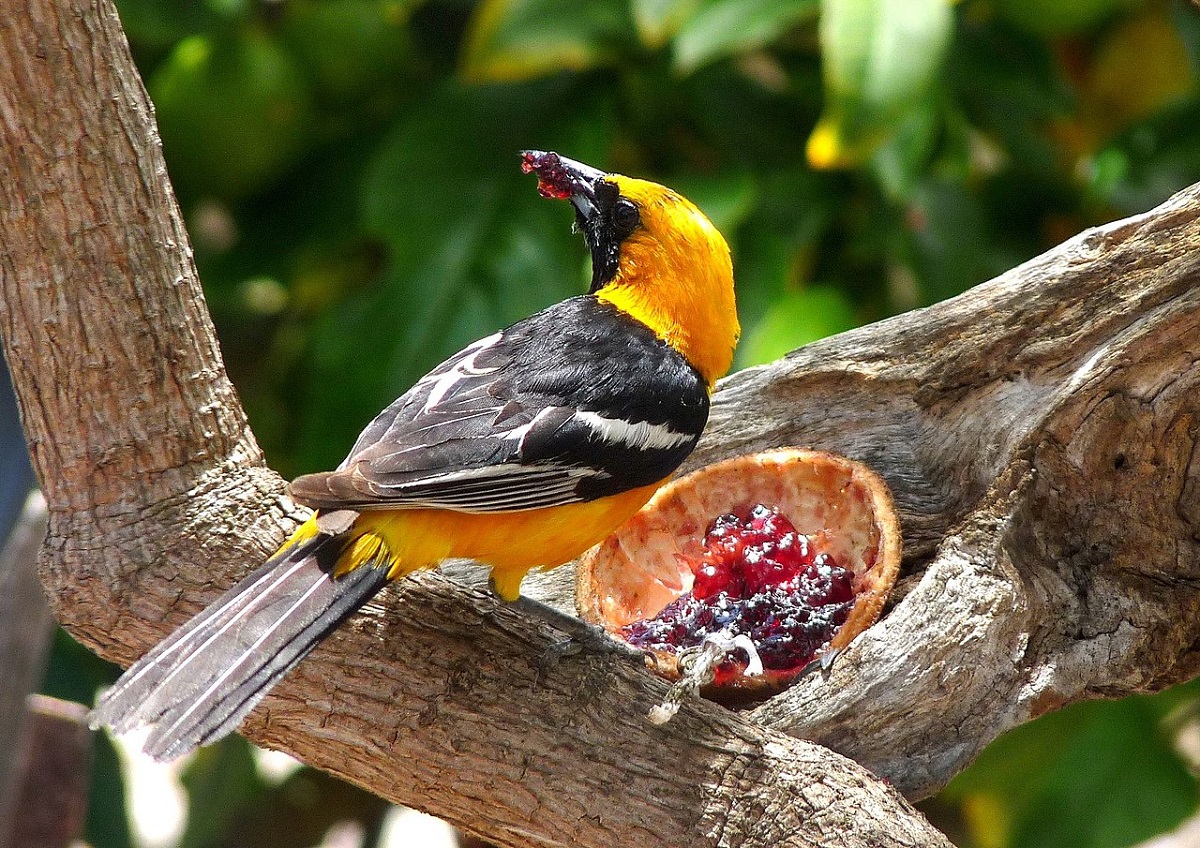
1. Overall Size And Shape
Both birds are considered to be passerine as they perch.
Overall, the American robin is slightly larger than an oriole. Robin’s have stout, rounded bodies that make them look plumper. They are members of the thrush family that often have sturdy frames.
On average, a robin measures 10 inches long, slightly larger than an oriole that measures 7-9 inches long. He weighs an average of 2.7 pounds in contrast to the average oriole weight of 1.2 pounds.
While Orioles are marginally smaller than the American Robin, their frames are far more slender though still considered sturdy. They have long tails, long legs, and a thick, pointed bill.
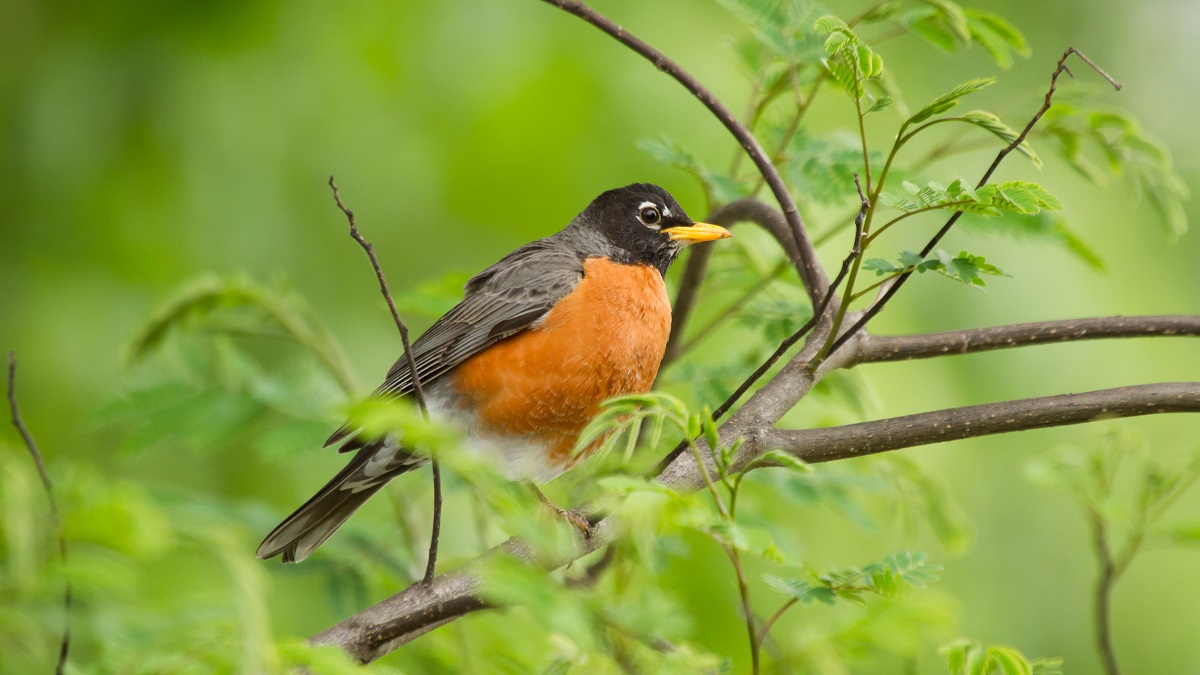
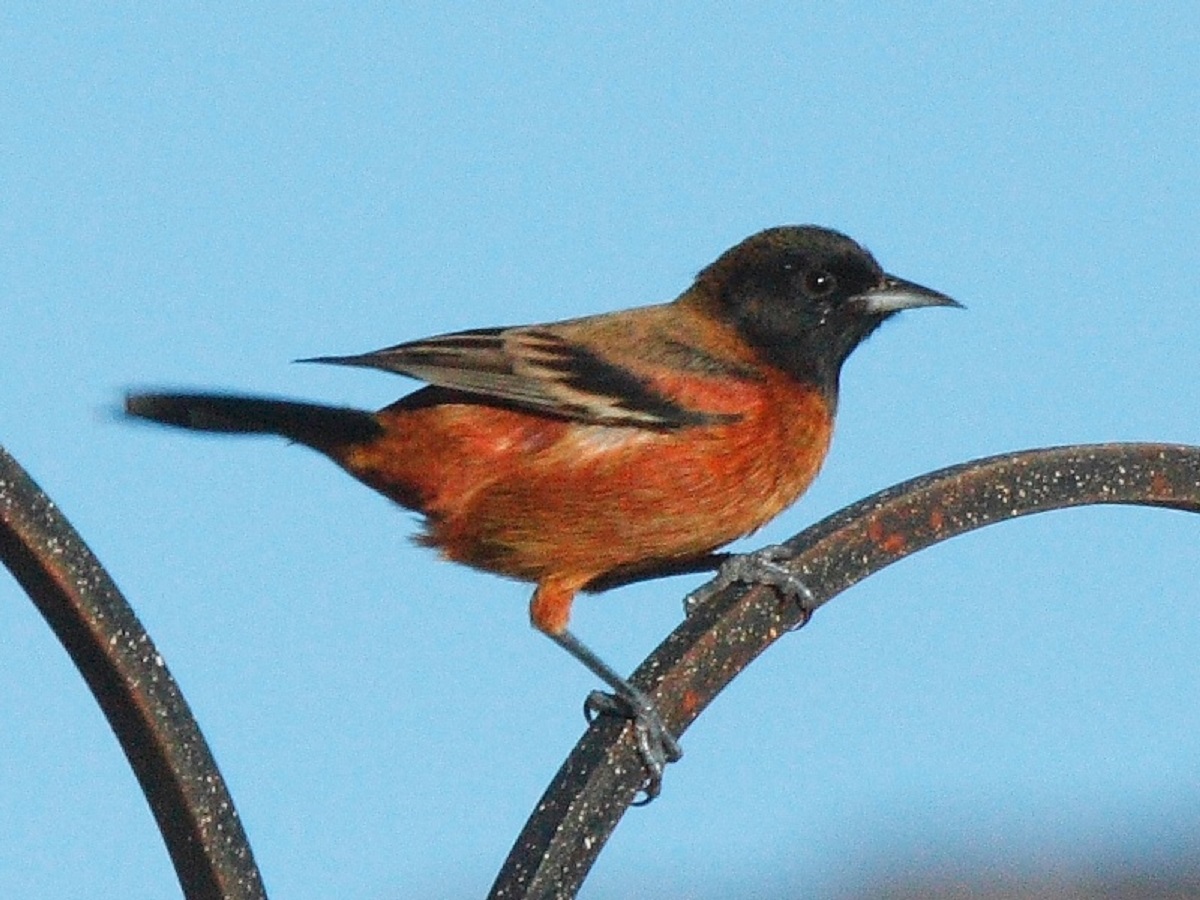
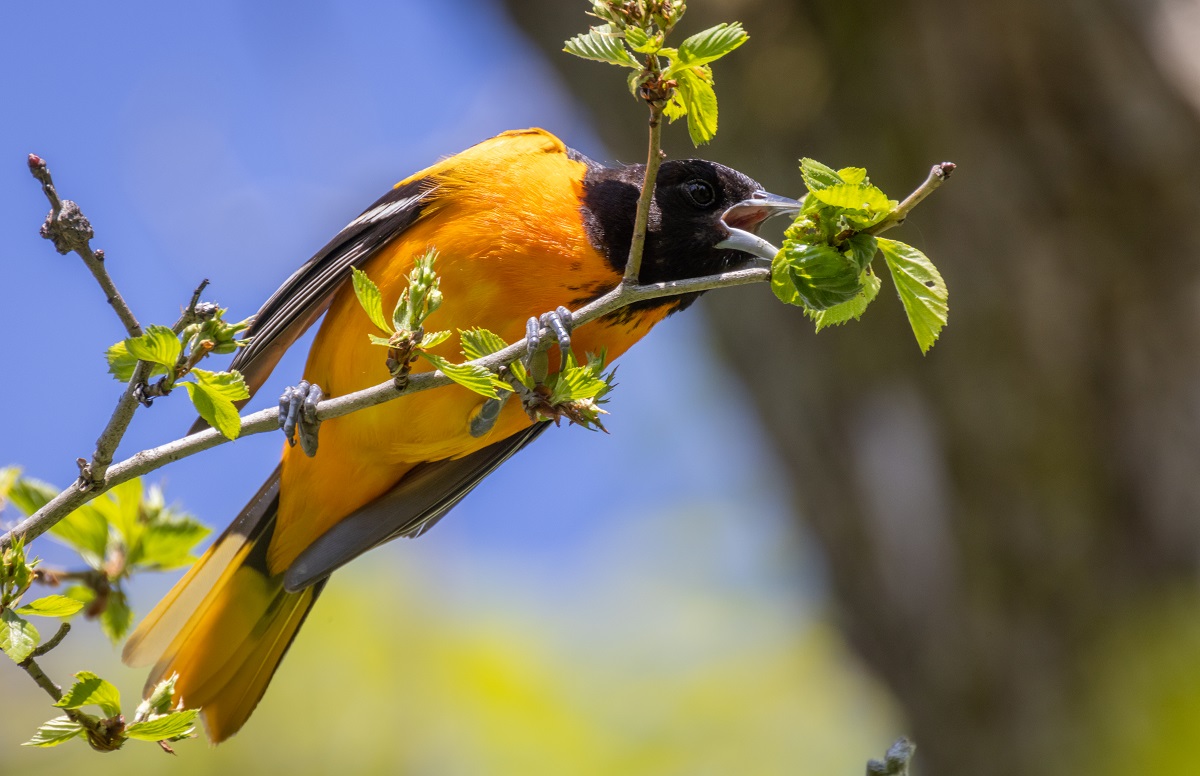
2. Coloration Of Plumage
While both songbirds possess orange breasts, the coloring of the Baltimore Orioles is brighter and more pronounced. Orioles have many color variations, and some more closely resemble robins than others. Here is how the birds differ:
Unlike the muted color palate of robins, the oriole’s orange underparts stand in stark contrast against the treetops. The most distinguishing feature of the Baltimore orioles is their bright orange undersides on the breast, which is more prominent in adult male orioles. Orchard orioles have orange feathers that are rustier.
Baltimore orioles have black heads and black upper parts with white patches on their wing bars. The back of this bird may be orange, gold, or yellow as well. They have hints of orange in their tail feathers.
While the color of the breast of the American Robin might be a muted version of the Baltimore orioles coloration, their underside might be warm orange to maroon on their bellies. Their bodies are gray-brown while their heads range from jet black to gray, feature white eye arcs and supercilia, and white throats with black streaks. They may have gentle whisps of white at the base of their tail feathers.
While most orioles (such as the Baltimore oriole, orchard oriole, and Bullock’s oriole) have jet black (or silver-black bills) beaks, the American robins have yellow bills.

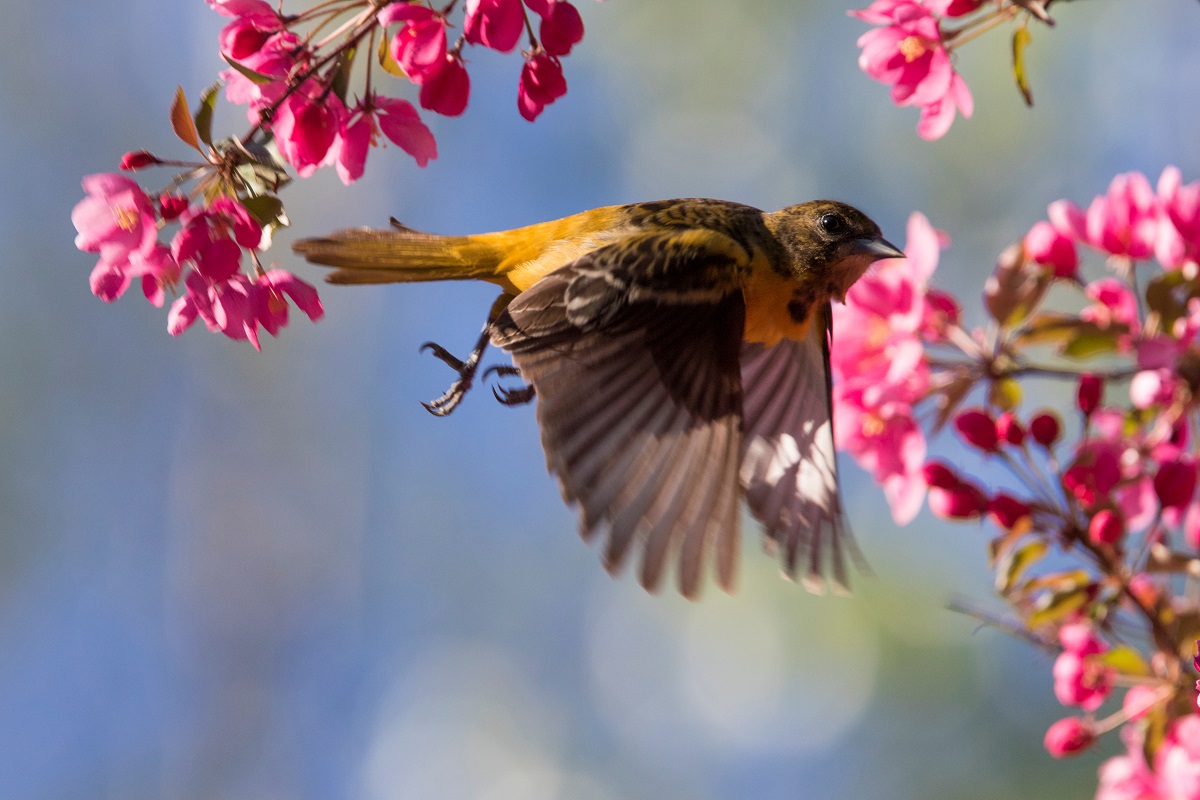
3. Habitat and Ranges
The American robins are the most abundant songbirds in North America, and their habitats often overlap with most species of Orioles. They number in excess of 370,000,000, while estimates for all species of orioles are much lower. Orioles accounted for in the Birds in Flight database, only number 41,500,000. (This includes Baltimore orioles and orchard orioles each numbering 12,000,000, Bullock’s orioles, 7,400,000, Scott’s orioles, 4,900,000, Audobon’s orioles, 3,500,000, and hooded orioles, 1,700,000.)
Robins are considered migratory birds, but most travel shorter distances to winter, if they travel at all. Some overwinter in the northern US, while those in states such as Florida, California, and Texas stay put.
Unlike other migratory songbirds, the American robin is a year-round resident in most portions of North America. Those who live in northern Canada and Alaska may travel to Mexico and Central America for wintering grounds, and the habitats often overlap with Orioles.
Robins prefer woodland and more open farmland and urban areas as their habitat.
Orioles, on the other hand, are long-distance migratory birds. While their habitats often overlap during breeding, their shared habitats are short-lived. The Baltimore oriole, for instance, arrives in its breeding ground in the eastern portion of North America in late spring and heads to its wintering ground in Central and South America as early as July. While the two songbirds share a similar habitat during the breeding season, the Baltimore Oriole (as well as the west-coast-dwelling Bullock’s Oriole) spend their winter months in a warmer climate.
Orioles have recently been found in orchards, farmland, urban parks, and suburban landscapes as long as there are plenty of large, leafy deciduous trees; they are seldom found in deep forests. They prefer open woodland, the edge of a forest, and partially wooded wetlands or trees along rivers.
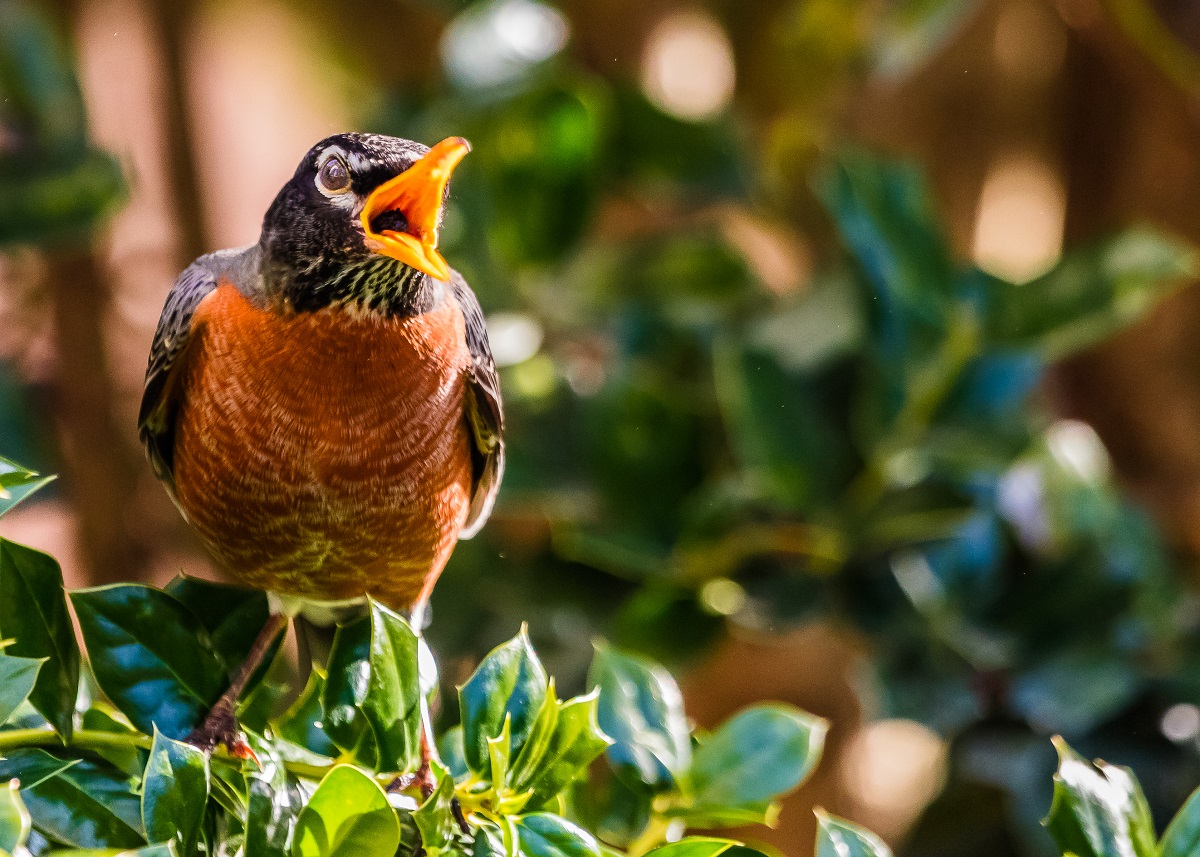
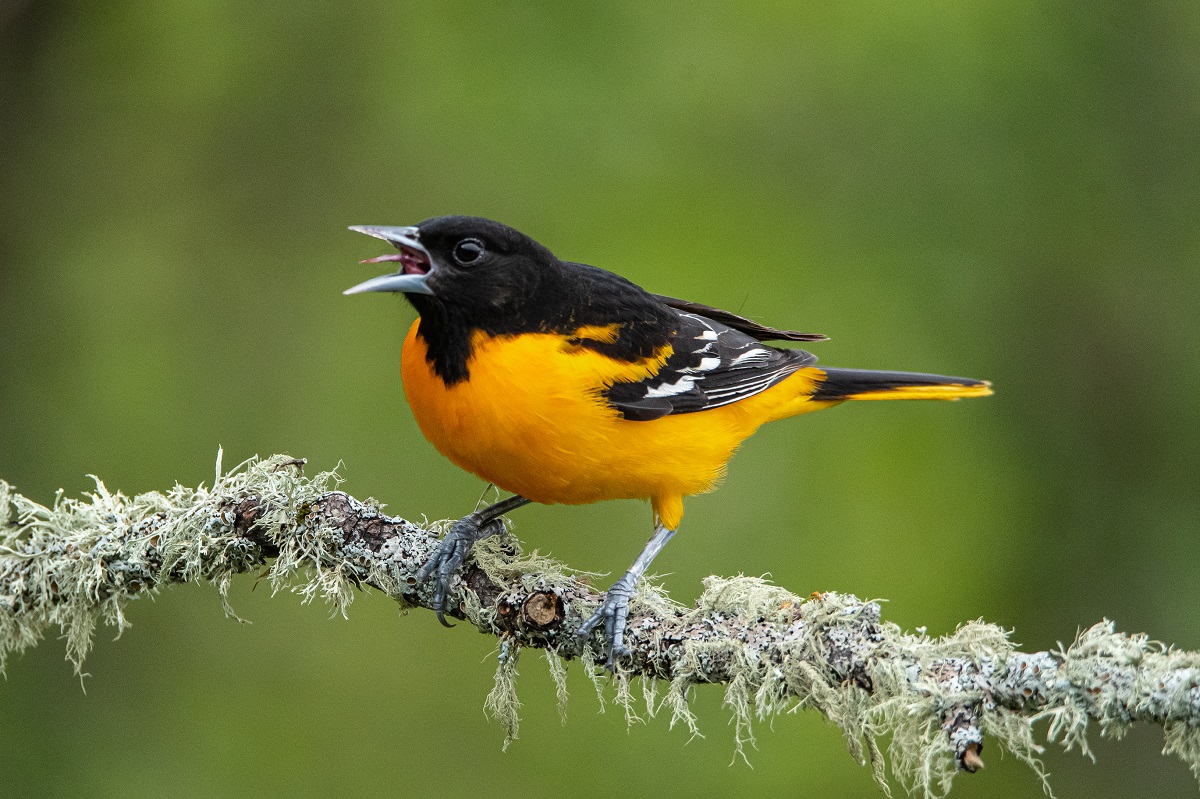
4. Bird Calls And Songs
The American Robin and Baltimore Oriole sing happy and cheery songs, but there are a few ways to distinguish the two.
The call of the America Robin is noted as one of the earliest signs of spring. It is composed of transparent, liquid warbling notes with repeated phrases that last a few seconds. The American robin is a member of the dawn chorus when their mating calls are loud and fast. While Robins sing throughout the day in the height of late spring and early summer, their mating calls are most audible during the early morning hours.
The Baltimore Oriole is another harbinger of spring. Their calls have a clear and cheery flute-like quality with a similar tone and pitch to the America Robin. Even experienced birdwatchers have difficulty telling the difference between a robin and an oriole. While their tone sounds identical, the Oriole often uses more variation in their notes and doesn’t repeat phrases in the same way as Robins.
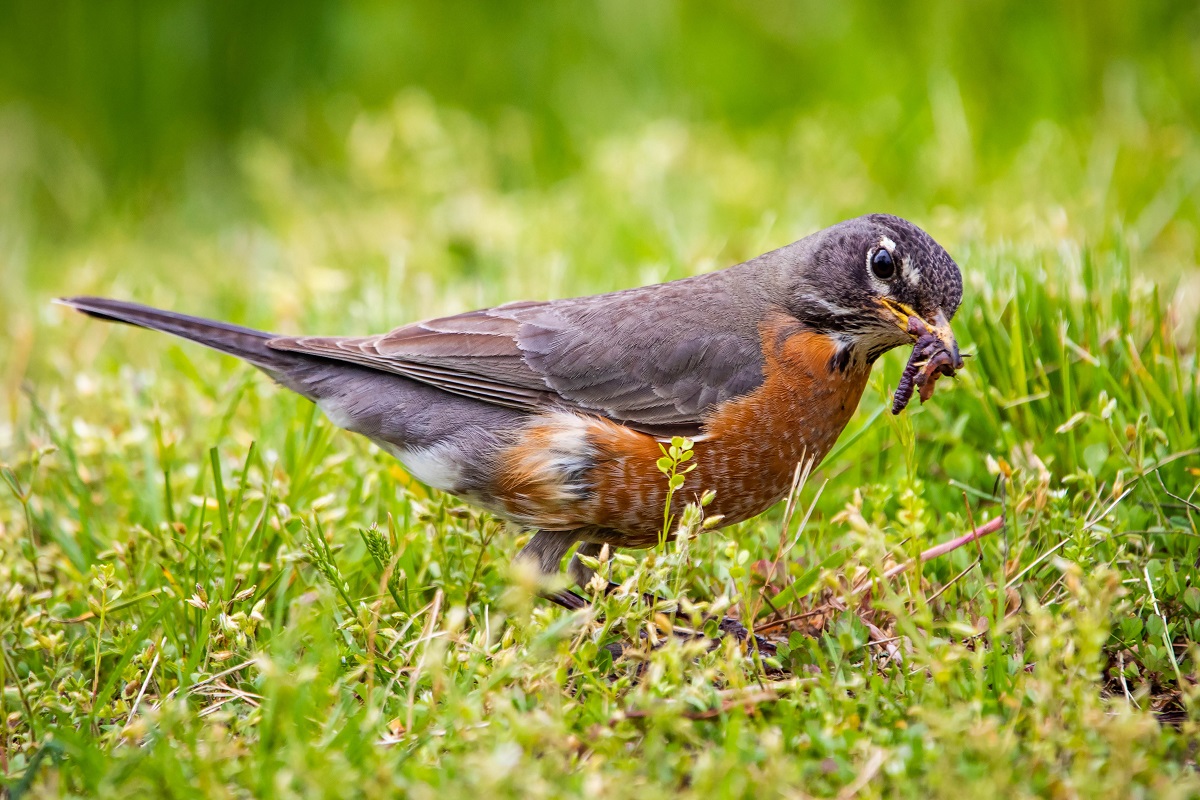

5. Diet
A great way to tell the difference between an American Robin and an Oriole is by checking the visitors at your backyard feeders. While the diets of these two songbirds are similar, they often don’t intermingle at birdfeeders.
The diet of the American Robin consists entirely of insects. During the breeding season, robins live on a diet of primary earthworms and other insects. You will never see a robin dining at a birdfeeder because they opt for insects over seeds and nuts. They will run across a lawn in pursuit of worms and insects.
While Orioles eat insects primarily during the breeding season, you can draw them to your backyard space with special oriole birdfeeders that offer berries, citrus fruit, and particularly jelly. Like robins, Orioles are not interested in a general songbird seed mix. Baltimore orioles make their home high in deciduous trees, so hanging an Oriole birdfeeder from a tree branch is a great way to attract them to your backyard!
Is It A Robin Or An Oriole?
As the habitats of these two energetic songbirds often overlap during the breeding season, it’s not unusual for birdwatchers to spot a Robin and an Oriole in the same tree!
While they have a lot in common, critical differences in their orange coloring, size, shape, migration patterns, and diet are quick ways to spot these two songbirds apart. The easiest way to tell the difference between these two birds is by noting the orange coloring.
Robins have a muted color palate that blends in with their surroundings, while Orioles (especially male orioles) have an electric orange coloring that stands out in the crowd!

